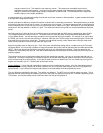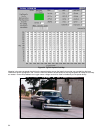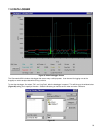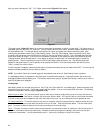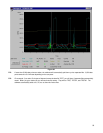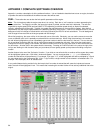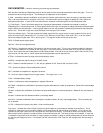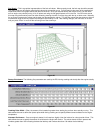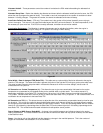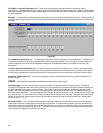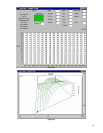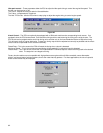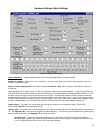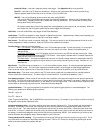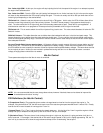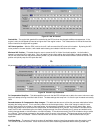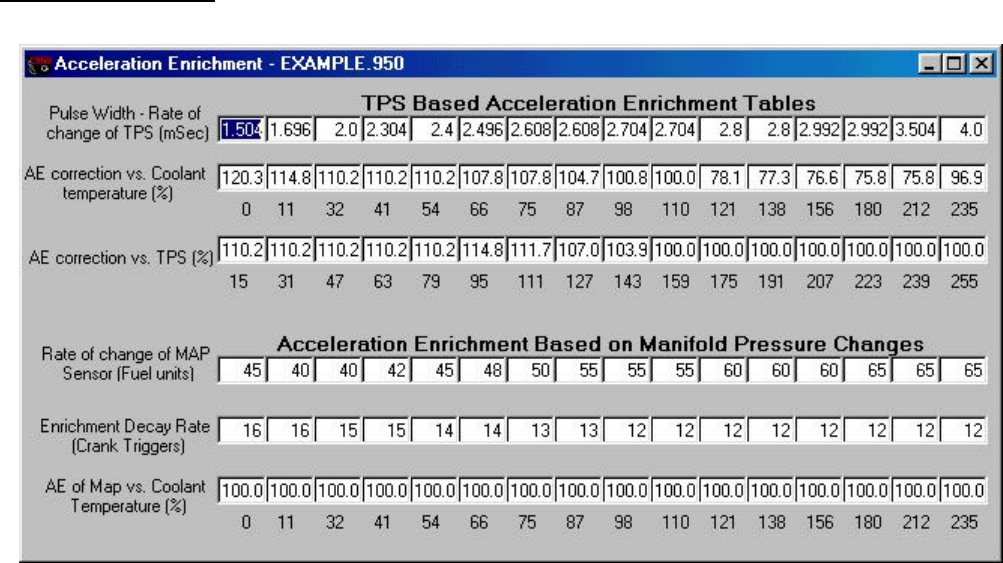
59
Afterstart Holdoff – These parameters control the number of revolutions the ECU waits before adding the afterstart fuel
enrichment.
Afterstart Decay Rate – Rather than deleting the afterstart enrichment after the afterstart holdoff period all at once, the ECU
allows the user to program the speed of decay. The number in each cell corresponds to the number of revolutions to allow
between 1% fueling changes. The greater the number, the slower the afterstart enrichment will decay.
Auto Prime 7mSec Pulse Count – (TBI only) The number here is the number of fuel pulses injected if you are trying to
“prime” the engine. This occurs if you press the throttle beyond the WOT point and release it. At colder temperatures, it will
be necessary to inject more fuel. If the ECU is correctly calibrated, this feature should not be needed.
Acceleration Enrichment – The following six groups of parameters are for adjusting fuel delivery when the engine is
accelerated. This table is based upon change in TPS position and change in MAP reading.
Figure 42
Pulse Width – Rate of change of TPS (Delta TPS) – This table sets up a pulse width of fuel to be delivered to the engine
when the TPS changes. The faster the throttle is opened, the further to the right the ECU will go to get the pulse width value.
The actual number entered is the pulse width in milliseconds. Because of minimum on-time settings, values under 1.5
milliseconds will not inject fuel.
AE Correction vs. Coolant Temperature (%)– This allows the user to give more acceleration fuel based on the engine
temperature to compensate for fuel droplets sticking to the manifold walls or cylinder walls. The number entered is a
percentage modification to the Delta TPS. Numbers over 100 such as 110 (%) add 10 percent more fuel to the base Delta
TPS number. Numbers lower than 100 such as 90 (%) reduce the base Delta TPS by 10 percent. If 100 is entered there is no
modification due to temperature to the base Delta TPS.
AE Correction vs. TPS (%)– This allows the user to adjust the size of the acceleration compensation based on how far open
the throttle is. This can be very useful for large throttle bodies where small changes off idle can give large airflow increases,
but changes to the throttle after about mid-throttle give little airflow increase. This is also percentage based with the numbers
lower than 100 subtracting a percentage from the base Delta TPS and numbers higher than 100 adding a percentage to the
base Delta TPS. The numbers below the table indicate the throttle position sensor position.
Rate of Change of MAP Sensor (Delta MAP) – A change in the manifold pressure can indicate a change in the engine
loading requirements. The values entered fuel units and are the same as the base fuel map (whole numbers) and are added
to the base fuel value.
Decay – How fast to pull out the additional fuel after detecting a change in the manifold pressure. This is the number of
triggers to wait between the subtraction of 1% of enrichment.



